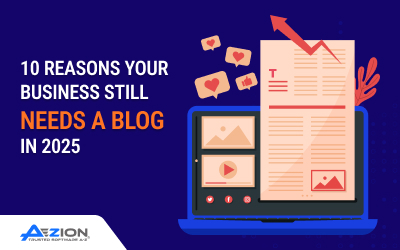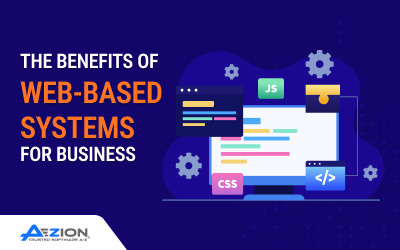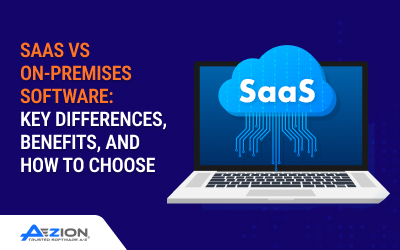Growing businesses face an abundance of data. That data poses a host of challenges, but if you can overcome them, you’ll unlock valuable insights that can help you continue scaling up. To address the complexities that ever-growing datasets bring, most organizations turn to an Enterprise Information Management (EIM) solution.
We’ve explored how enterprise information management solutions fit within an Enterprise Collaboration Program, and we’ve taken a deep dive into choosing enterprise information management software. Now, let’s go through some best practices to help you make the most of your investment in EIM, so you receive the full benefits of your powerful new solution.
#1 Think Beyond IT During Implementation
With EIM rapidly becoming a standard addition to IT infrastructure, far too many teams are approaching it as “just another software project.” Like other software implementations, EIM solutions tend to have highly technical requirements, but failing to acknowledge and prepare for the broader business impact beyond the IT department will set you up for failure.
A holistic implementation plan is essential because enterprise information management software will have far-reaching effects across your organization. Failing to plan for the adoption and operation of the solution from a company-wide, long-term perspective is enough to compromise your EIM investment before you even get started.
The solution is to adopt a business-centric implementation strategy from day one. Identify company-wide goals associated with the implementation and prioritize them. Then, work backward, adjusting your short- and long-term plans so that they incorporate the most important goals.
#2 Turn Stakeholders Into Internal Champions
You can identify countless stakeholders when it comes to an EIM solution, including those in IT, sales, finance, and so on. Engage those stakeholders and business experts and involve them in the direction and execution of your implementation plan. Your team should consist of experts in solution building, system administration, user adoption, and project management. From there, part of your plan should involve converting those stakeholders into internal champions.
Internal champions play a significant role in implementing any new software, especially one as far-reaching as enterprise information management software. Rolling out the software in phases will allow you to invest in onboarding, training, and check-ins to help garner as many internal champions as possible. Those internal champions can then help you market the software to other teams and get them excited for the rollout in their department. They may even be available to help onboard and train other employees as you scale the rollout up.
#3 Mitigate EIM Implementation Risks and Costs
Phasing the rollout is essential to give your team time to onboard, train, and garner internal champions to help break down the barriers to adoption in other departments. However, the longer it takes to get up and running, the more costs (and associated risks) a company will incur.
For that reason, businesses need to accelerate implementation and adoption when possible. Involving internal champions in the rollout process can prove invaluable in this regard as they can act as “boots on the ground,” fostering buy-in at scale.
#4 Drive Momentum During Launch
When it comes to an EIM solution, the “build it, and they will come” mindset isn’t practical. In many cases, users will view your EIM solution as something optional. They’ll use it if they want to, but they will not pursue it consistently unless you launch it with dedication and purpose. Investing in the adoption phase is crucial here because getting people to use an EIM solution often requires business process changes and new information management protocols—neither of which your staff will pursue on their own.
Driving momentum throughout the adoption period is one of the most critical steps to ensure success. Choosing a team of adoption specialists will provide you with leverage, as they can advocate on behalf of the business and contribute to planning, onboarding, and acceptance. Through multiple channels, they’ll help build awareness regarding the enterprise information management solution and educate future users on the changes and benefits they can expect.
As part of a dedicated and purposeful adoption, you should also invest in extra resources to be available to business users during the launch. These could include solution specialists, in-house support, on-demand videos, documentation, and more. Users will be faster and more willing to address challenges and start using your EIM software with the right resources.
#5 Plan for Long-Term EIM Operations
In many cases, the planning team completely overlooks the long-term operation of the EIM solution as they focus on more pressing matters, like driving adoption. However, operating an EIM solution goes beyond keeping it running on a day-to-day basis. Taking time to consider the ongoing operation of your enterprise information management solution will prove valuable and help your business consistently deliver a good user experience while maintaining a secure, high-performance system.
Performance, security, and availability are the three pillars that will evoke trust among business users, especially early on in the adoption process. From there, you should take operations to the next level by supporting system usage in a way that addresses the changing needs of your user base. This could include tuning data models and workflows or offering extra support to power users. Over time, user experience and functionality will improve, naturally engraining the EIM solution into the core of your business.
#6 Reflect and Continuously Refine your EIM Strategy
After every stage of your plan, recognize internal champions, reflect on the benefits realized so far, and celebrate and promote the success of your EIM solution. By engaging the right people, you’ll gain insight into improving the software to help foster additional buy-in and offer more value to your organization. From there, you need to consider the outcomes of each stage of the plan objectively.
As you move forward, ask yourself if your business users are satisfied, if the support teams are confident, and if you’re achieving the expected results. As you answer these questions, carefully refine your strategy and continuously set goals that help you improve on important points.
Next Steps with Your Enterprise Information Management Solution
Aeizon has helped many companies pursue successful enterprise information management implementations, and we recognize that the complexities you’ll need to address go far beyond these tips. Contact us to discuss your EIM strategy and get help to ensure your successful rollout.
Frequently Asked Questions:
1) What are the best tips for effective enterprise information management?
The best tips for effective enterprise information management include ensuring data quality, establishing strong governance, enabling secure access, and leveraging analytics for better decision-making.
2) How can businesses improve their enterprise information management strategy?
Businesses can improve their enterprise information management strategy by implementing clear governance policies, integrating data systems, adopting automation, and prioritizing data security and quality.
3) What tools support better enterprise information management?
Tools that support better enterprise information management include data governance platforms, master data management (MDM) solutions, content management systems (CMS), and business intelligence (BI) tools.



